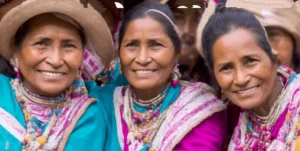Immerse yourself in the world of Mayan artistry as we embark on a journey through time to uncover the ancient tradition of artisanal hand weaving. For over two thousand years, the Mayan people have perfected the craft, passing down their unique and colorful designs through generations. Join us as we explore the rich tapestry of the Tzotzil culture, where the skill of hand weaving is not only a means of creating stunning textiles but also a profound connection to their heritage and a testament to their enduring legacy.
A Legacy Woven in Time
The art of hand weaving among the Mayan people traces its roots back centuries. With techniques that have stood the test of time, the craft represents an unbroken link between past and present. The intricate patterns and vibrant colors that adorn the woven textiles are not merely designs; they are symbols of a cultural identity that has withstood the passage of time. Each thread tells a story, capturing the essence of the Mayan civilization and carrying it forward into the modern world.
Tzotzil Culture: Guardians of Tradition
Within the larger Mayan community, the Tzotzil people have played a significant role in preserving and promoting the art of hand weaving. Nestled in the highlands of Chiapas, Mexico, the Tzotzil culture embraces weaving as a way of life. Passed down through generations, the skill of hand weaving is a sacred tradition, held close to the hearts of the community members. By engaging in this craft, they honor their ancestors and ensure that their cultural heritage remains alive and vibrant.
Colors that Speak
The vibrant colors used in Mayan hand weaving are not chosen at random; they carry deep symbolic meanings. From the bold reds representing life and vitality to the soothing blues embodying spirituality, each color holds a story within the fabric. The intricate patterns, often inspired by nature, depict animals, plants, and celestial elements, connecting the weaver to the natural world and the cosmic order. These designs serve as a visual language, silently communicating the cultural richness and spiritual beliefs of the Mayan people.
The Intergenerational Bond
The transmission of weaving skills within the Mayan culture is a testament to the strong intergenerational bond. Young weavers learn from their elders, sitting side by side as they work on the looms, exchanging knowledge, techniques, and stories. This deep connection fosters a sense of continuity, respect, and shared responsibility towards preserving their heritage. The act of weaving becomes a bridge between the past and the future, binding generations together through the threads of tradition.
Conclusion
Mayan hand weaving is not merely an ancient craft; it is a living testament to the rich heritage and cultural resilience of the Tzotzil people. Through their intricate designs, vibrant colors, and intergenerational bond, they continue to weave the story of their ancestors, ensuring that their traditions are cherished and celebrated. The artistry, symbolism, and profound connection to the Mayan civilization make handwoven textiles a cherished treasure. Let us honor the artisans and their enduring legacy as we embrace the threads of tradition, embracing the art of Mayan hand weaving as a vibrant reminder of the cultural wealth and artistic mastery of the Tzotzil culture.



